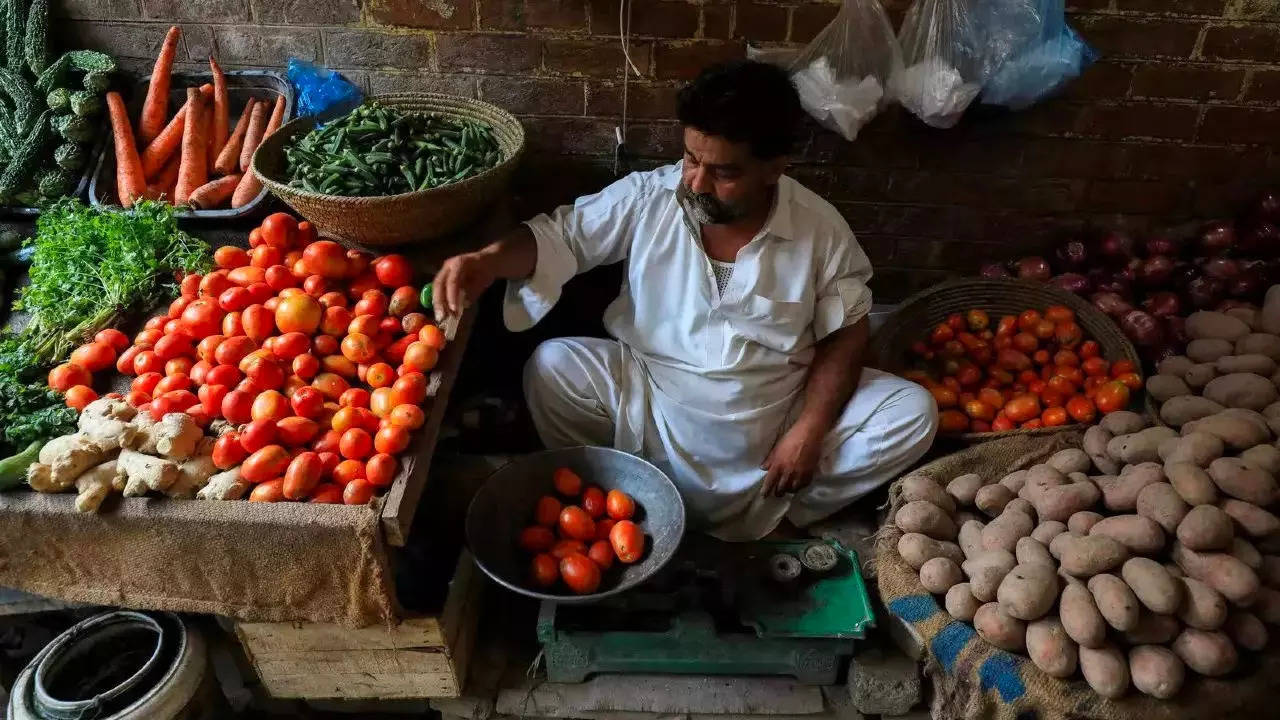An uneven monsoon has contributed to this shift in India’s inflation outlook for the fiscal year, the report notes. Vegetables, with a weight of 15.5% in the food index, are one of the most volatile components, and price spikes are not uncommon.
In fiscal 2020, vegetable inflation remained in double digits for seven months, leading to an average food inflation of 6.7%. While there was another period of double-digit vegetable inflation between March and September 2022, averaging 15%, a repeat in this fiscal is unlikely, the report adds.
The recent good news is that vegetable price pressure has eased, with inflation dropping from its July peak of 37.4% to 3.4% in September, thanks to increased supplies. By September, the prices of tomatoes, which are a big driving factor for vegetable price inflation, and several other vegetables had significantly declined. However, onion prices continue to pose a challenge, and there is a possibility of vegetable prices rising again, CRISIL cautions.
According to the report, in recent years, data reveals the following trends:
- Vegetable inflation has been on the rise, averaging 5.7% from fiscal years 2020 to 2023, compared to an average of 0% from fiscal years 2016 to 2019. This increase in vegetable inflation has contributed to the overall rise in average food inflation, which went from 2.8% in fiscal years 2016 to 2019 to 6.2% in fiscal years 2020 to 2023.
- The frequency of vegetable price spikes has seen an uptick. Out of the past 100 months, CPI vegetable inflation exceeded its average of 3.8% in 49 months. It crossed 7% in 35 months, 10% in 30 months, and 20% in 13 months.
- Volatility in vegetable inflation has also surged. As measured by standard deviation, the volatility of vegetable inflation, already relatively high at 11.1 during fiscal years 2016 to 2019, increased to 17.3 during fiscal years 2020 to 2023. In contrast, food inflation volatility during these periods remained much lower, at 2.9 and 3.4, respectively.
Three key factors play a crucial role in shaping vegetable prices in India, particularly the consumption of tomatoes, onions, and potatoes (TOP), which account for over one-third of the CPI vegetables category. Firstly, any significant price shifts in TOP vegetables have a direct impact on CPI vegetable inflation. For example, from fiscal years 2020 to 2023, vegetable inflation rose to 5.7% compared to zero in the previous four fiscal years, mainly due to a sharp 9.1% increase in TOP inflation.
India GDP Growth Explained: Road To Indian Economy Becoming World’s 3rd Largest | Deep Dive Analysis
Secondly, the persistent rise in TOP inflation has been a driving force behind the consistently high vegetable inflation. In contrast, non-TOP vegetable prices have seen a mild decline.
Thirdly, TOP inflation is marked by substantial volatility, significantly surpassing the overall vegetables category. A recent study in the RBI monthly bulletin highlighted that while TOP vegetables make up a small portion of the CPI basket, their price volatility has a substantial impact on headline inflation.
